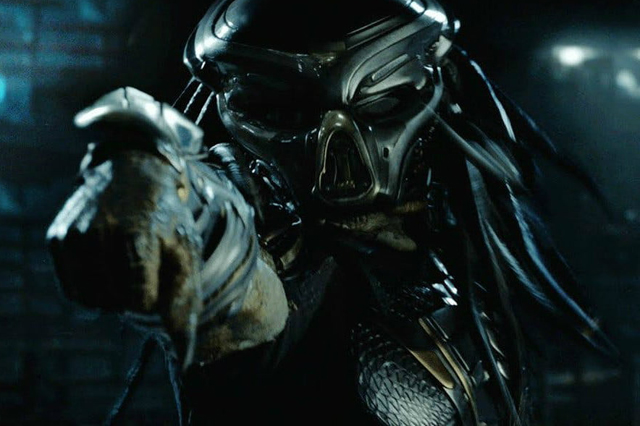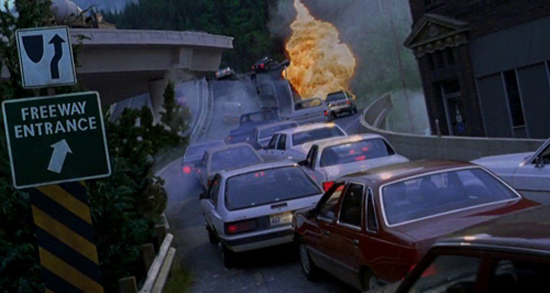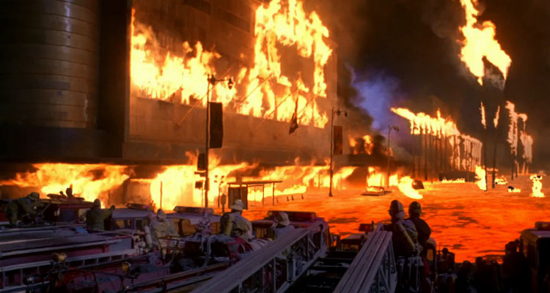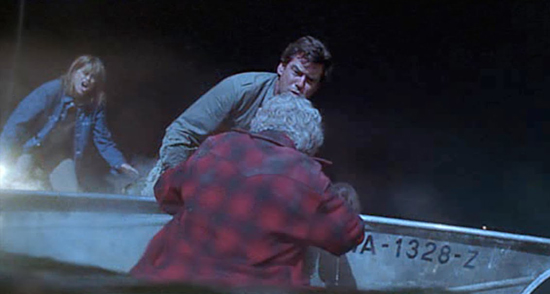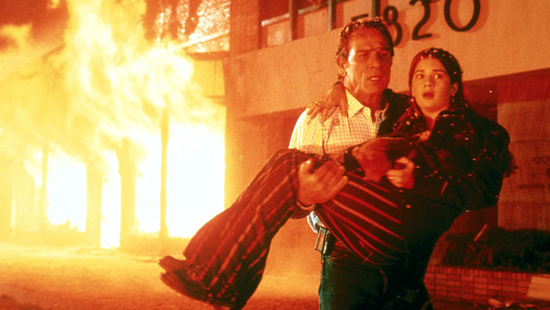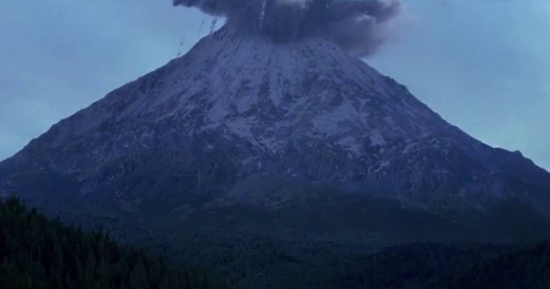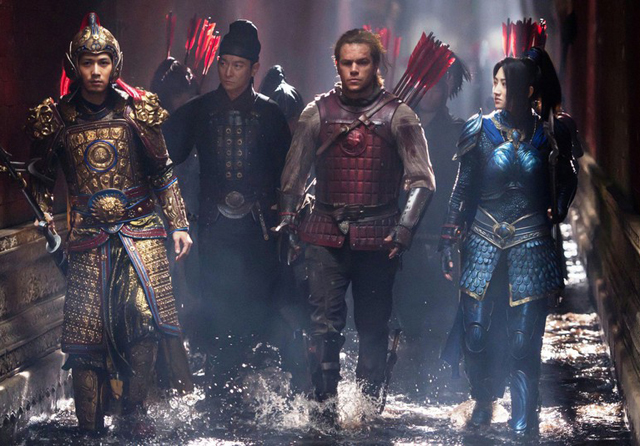
Hollywood doesn’t like surprises, unless they are the kind that benefits them exclusively. External things like controversies, disasters, and all sorts of calamities can throw the industry in a state of turmoil, but even smaller factors tend to put the business in a state of worry. The obvious thing that Hollywood deals with is being able to forecast the state of the industry, and this is often much harder to do than anyone thinks. That’s why surprises are not always a great thing for Hollywood, because it disrupts the careful order that many in the industry desperately want to manage. Every year, all the production companies and studios would like to believe that they will make more this year than in the year prior, and because movies take a long time to develop, sometimes over several years, their hope is that the industry doesn’t fall into a major upheaval that sabotages their best laid plans. You can have any major catastrophe be a part of that disruption, like an industry wide financial collapse or worldwide events like wars and natural disasters causing a cut in revenue, and sometimes Hollywood would rather deal with those situations; they have insurance after all. But, it’s the other situations that cause a disruption that Hollywood dreads every now and then, and this is usually the sudden emergence of a trend. Predicting how trends develop is often impossible, and usually when one happens, it will benefit those closest to it, but also affect the ones left behind in a negative way. Sometimes those are disruptions that need to happen in order to help the industry evolve, but make no mistake, revolutions never happen without mayhem in it’s wake. And the most strongly identifiable kinds of disruptions that we find in Hollywood are the ones in the form of game-changing movies that suddenly become successful.
It’s hard to identify a game-changing movie without also looking at the context of the times of the release. Often, we identify these movies long after the fact in retrospect; as sort of a ground zero for where the changes in the industry sprouted from. For a movie to have been a game-changer, it first had to be made with the intent of not following the standard expectations of the industry, whether it’s in the story-telling or the technique of filming. Then it has to be released at a time where it’s impact is felt immediately, finding it’s audience and gaining the attention of the industry. Many films break the rules of Hollywood, but they often go unnoticed upon their initial release. A game-changing film breaks the rules and overcomes the odds towards success regardless. And their success suddenly creates a demand for more just like it, which causes the industry to rethink it’s strategies. This is the disruption that Hollywood tends to dread, because with the pipeline of movies that takes many years to push through, the sudden shift suddenly throws the timing off of all these other projects. What seemed like a sure thing only a year ago can suddenly feel old-fashioned or insignificant just as quickly. For the game-changing film, it’s an experience that it likely never thought it would have. Filmmakers know that they have something unique on their hands, but they can never know if their movie is about to blow up and change the world. Their movie satisfies a craving on the part of the audience, as they are looking for something out of the ordinary but are quite sure what it is. But once they find it, it all becomes a perfect storm that leaves ripples across the film-making landscape.
One of the most notable examples of this to have come out in the last 20 years was a little movie called The Matrix (1999). No one would have guessed that this sci-fi vehicle for star Keanu Reeves would end up influencing almost all of cinema heading into the new millennium. Almost none of the typical Hollywood rules applied to this movie. It had a grungy, techno-punk atmosphere to it; it was philosophical; it took place in an online world, which was still very much in it’s infancy at the time; and it had some really bizarre visual effects that no one had even seen nor attempted before. Also, it came out in early April, normally a quiet point at the box office each year. And yet, audiences ate the movie up and it was proclaimed an instant classic. It even fared well against expected blockbusters that year like Star Wars: The Phantom Menace and completely wiped the floor with Will Smith’s Wild Wild West, despite him being the biggest movie star at the time. But, even though it’s impact was felt immediately at the box office, we wouldn’t understand it’s true affect on the industry for many more years. The real big change that The Matrix had was changing the way that movies looked. Look at all the movies released in the 1990’s and the 2000’s; there was a dramatic shift between then, and you could easily point to The Matrix as the movie that made the industry turn. The big difference is that movies in the 2000’s had a more decidedly digital look to them. The Matrix, while not shot digitally, still managed to convey the slickness of a digital world, and that in turn caught the eye of Hollywood and led them towards investing more fully in digital technologies for their productions and in the cinemas, all to capitalize on that more Matrix look. It could be said that The Matrix marks the beginning of the Digital Age in Hollywood. Matrix’s groundbreaking techniques like bullet-time and 360 pans also permeated the industry, maybe not as extensive as the visual look of the movie, but nevertheless proved influential. It’s one thing for a movie to become an instant hit at the box office, but when the actual structural look of movies in general begins to change, that’s when you know that a single movie has left a tremendous impact.
The best way to identify movies that leave an impact on the industry like The Matrix is to take an aspect of movie technology or storytelling and trace it all the way back to it’s roots. We owe standard film editing to D.W. Griffith’s The Birth of a Nation (1915) and sound to Al Jolson’s The Jazz Singer (1927). And while some techniques may have started in lesser known films, we owe blockbusters like The Wizard of Oz for popularizing color photography and Fox’s The Robe (1953) for widescreen and helping to make them standards for the industry as a whole. Game-changing films can also jump start a media empire, like what Walt Disney did with Snow White and the Seven Dwarfs (1937), the first ever feature length animated film. Cultural movements can also find their focal point in a movie that hits a cord at just the right moment, like what Dennis Hopper’s Easy Rider (1969) managed to do for the counter-culture of the 60’s and 70’s. Essentially, these movies started turning points that continue to manifest in Hollywood today. Sometimes it takes just that special film to help Hollywood see the necessity of a new technology or to embrace a new way of thinking. But at the same time, you could never have said beforehand that these were going to be the movies that would do it either. Often these movies were created in a bubble where the filmmakers decided to ignore Hollywood and their rules and venture forth because they were following their gut feelings. Now, this is not always a guarantee of success, and most risk-taking movies do tend to fail and be forgotten. But, when these movies do happen, then the risks suddenly become worth it.
The reason Hollywood becomes weary of these types of movies is because they are often hard to sustain in the long run. Not every movie has a legacy that lasts over 20 years. Even The Matrix couldn’t repeat it’s own success, as their creators, the Wachowskis, would learn once they released their underwhelming sequels a mere four years later. Perhaps the rarest exception would be the movie that launched the era of the blockbuster, Star Wars (1977). The fist movie, which has since been re-dubbed A New Hope, was an undeniable game-changer when it first premiered, creating a whole industry wide flourish of big budget science fiction and fantasy in it’s wake and also revolutionized everything from visual effects to marketing within the industry in the years since. But, even more remarkable is that the brand has remained impenetrable even 40 years later, remaining resilient to this day. It’s even survived the backlash against the receptions to some of it’s chapters and continues to be a juggernaut at the box office. With that itself, Star Wars has proven influential for other studio fixtures in terms with how they market their brands. You could say that the entire nostalgia heavy mixture that we find in Hollywood today is because of the example of Star Wars and how well it has retained it’s relevancy for so many years. With toy products, commercial tie-ins, and even theme park experiences, you can see the Star Wars example taking hold throughout the industry. It’s primarily how brands like Jurassic Park, Transformers, Teenage Mutant Ninja Turtles, and Harry Potter have maintained their relevance for far longer than they were expected, or should have lasted. But, with a long lasting resilience like Star Wars, the industry might mistakenly believe they have found a safe level ground to coast the flow of the industry on, and that is not really the case. Star Wars is an exception to the rule, as most game-changers are, and believing that they are reliable is a mistake that could turn costly in the long run.
Hollywood is a high stakes industry where money flow matters greatly. Because of this, Hollywood needs reassurances, and that becomes a problem when your project works outside of the accepted margin. So, the best way to be prepared in Hollywood is to thoroughly examine the landscape of the industry often and see if there are any patterns emerging that can benefit the industry as a whole. Perhaps the thing that is having the most significant effect on the industry right now is how the demographic shift in viewership is changing. For most of it’s history, Hollywood has focused mainly on gaining viewership in suburban Middle America, where they were most likely to find the most reliable, weekly visitors to the local movie theaters. Because of this, the movies that have come out for so many years have often reflected the make-up of that body of population; mainly white, working class suburbanites. But, as audiences have grown more culturally savvy, and internet connectivity has made on demand viewership more possible, such as through Netflix, there is far less of a need to make movies that target specifically the average Middle American movie-goer. Now, we are seeing a huge rise in global cinema and that has changed the look of movie audience demographic significantly. We are now seeing the mainstreaming of stories about the struggles of oppressed minorities, and it is changing the attitudes of the industry significantly. You look at just the last two years, with Wonder Woman (2017) and Black Panther (2018), two genre specific movies that transcended their pedigree to finally give a cinematic identity to groups that are often largely marginalized in both society and in the movies (namely women and black people). This has opened the door for even more cultural diversity, as other groups like homosexuals have recently enjoyed more mainstream exposure through hits like Call Me by Your Name (2017) and Love, Simon (2018). And right now, we are witnessing a revolution in Asian representation with Crazy Rich Asians (2018) becoming a hit with audiences of all kinds. At this moment, the trend in Hollywood is to no longer ignore marginalized groups and recognize that their stories are just as capable of making lots of money as any other.
But, Hollywood must also understand that these movies must be freely allowed to either soar and fall on their own. Movements don’t flourish when the system they are fighting against is also the ones pulling the strings. A good case in point is the largely failed attempts by other studios to follow in Marvel Studio’s footprints with creating cinematic universes of their own. The reason most of them have failed is because too many of them have put the cart before the horse and expected the trend to do most of the work for them. One example is the laughably mismanaged Dark Universe that was supposed to take all of Universal Studios famous movie monsters and combine them all in a Marvel style shared universe. The Dark Universe was ended barely out of the gate with the catastrophic performance of The Mummy (2017), which even Tom Cruise’s star power couldn’t save. And the large reason for that was the fact that Universal played it’s hand too strong. It was so obvious that this was a marketing ploy that it robbed the actual movie of any real impact. And it didn’t help that The Mummy was a lazy mess as well; built solely to promote future installments and nothing else. It shows the failure of Hollywood trying to have control over something that is best left to flourish on it’s own. The same goes for trying to reach certain parts of the audience. People today know when they are being pandered to and it’s often enough to make them react negatively to a film when it becomes so apparent. That was the mistake the female led Ghostbusters (2016) made. The studio, Sony, made such a big deal that their movie was going to be this feminist breakthrough film, but in the end all it did was stir up a backlash that only negatively impacted it’s female cast and ended up setting things back for a female voice in the industry with it’s also lackluster performance, something that was thankfully remedied somewhat with Wonder Woman the following year. For a trend to take hold, trust needs to be put in the hands of outsiders who know what they are doing. You can’t manufacture a revolution; it just happens naturally thanks to circumstance and excellent timing.
Hollywood may not always be ready for these game-changing films, but they are essential for the survival of the industry. We wouldn’t have had the progress in the art of film-making had some of these films had not come along and popularized changes necessary for the industry. Though the movies themselves may no longer be culturally relevant (especially in the case of Birth of a Nation), we can’t deny their importance for what they brought to the medium. Where would we be now had sound, color, widescreen, and digital technology had taken longer to reach the industry. Each advancement builds on the other and the evolution of Hollywood is built on the foundation of these once thought to be outliers. But, Hollywood likes to be in charge of it’s own destiny, and that often makes it hard to accept these changes at first. Disruptions in the industry does cost a lot of capital for those left behind and you can see many companies throughout Hollywood’s history rise and fall depending on how well they respond to a new order, leading to some often major layoffs in the process. It’s a painful process, but essential for the future. And Hollywood might be in a better position to have a less hands on presence in the development stages of their productions. Why do you think so many filmmakers are flocking to Netflix right now? Because Netflix’s platform relies less heavily on focus grouping a film to make it play better in Middle America. This has opened up the flood gates for more diverse voices, which we have recently seen are an untapped market that is ready to explode. I’m excited by the fact that the game changers of today are people who have often been ignored in the past, and that because of movies like Black Panther and Crazy Rich Asians we are about to see a Hollywood that is going to be less homogenized and far more world savvy than ever before. Changing the game in Hollywood also allows for more opportunities for to try new things in Hollywood, which has always left long lasting impacts on the industry. We may not know which movies may make that difference, but when they arrive, it rekindles what we love best about film in general and renews confidence in the art of film-making once again.

